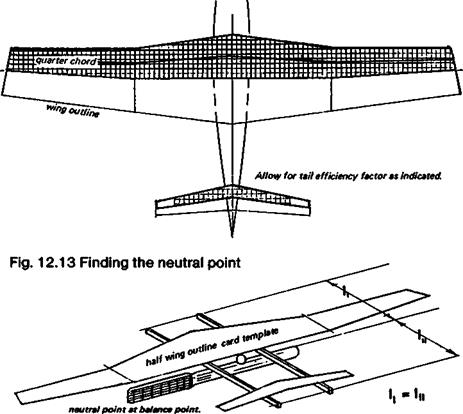MULTIPLANES AND TANDEMS
The aerodynamic centre of a biplane, or other multiplane wing arrangement, may be roughly worked out by assuming that the two, or more, wings can be replaced by a single equivalent surface which will have its aerodynamic centre on a line joining the quarter chord points of the two (or more) wings. It will lie on this line at a point determined by the relative efficiencies of the wings and their areas. The lower wing of a biplane is usually somewhat less efficient than the upper wing, so if two wings are of equal area and span, the combined a. c. will be slightly nearer the upper wing. With a sesquiplane, the combined wing a. c. will of course be much nearer the larger top wing than the smaller bottom one, and so on.
With a tandem, the rear plane may be treated exactly as a tailplane, for determination
|
1. From an accurate scale drawing of the model in plan view, make stiff cardboard templates of the front half of wing and tailplane. Use identical weight card for both. 2. Mount templates on two stiff, light balsa strips and find balance point. Trim balsa strips by trial and error so that 1 ш l^when balance point found. 3. Check overdrawing. C. g. of modal must be ahead of neutral point as found above. |
of the neutral point position. The fact that it shares the lift load makes no difference in this respect the centre of gravity must still be in front of the combined neutral point, for stability.












